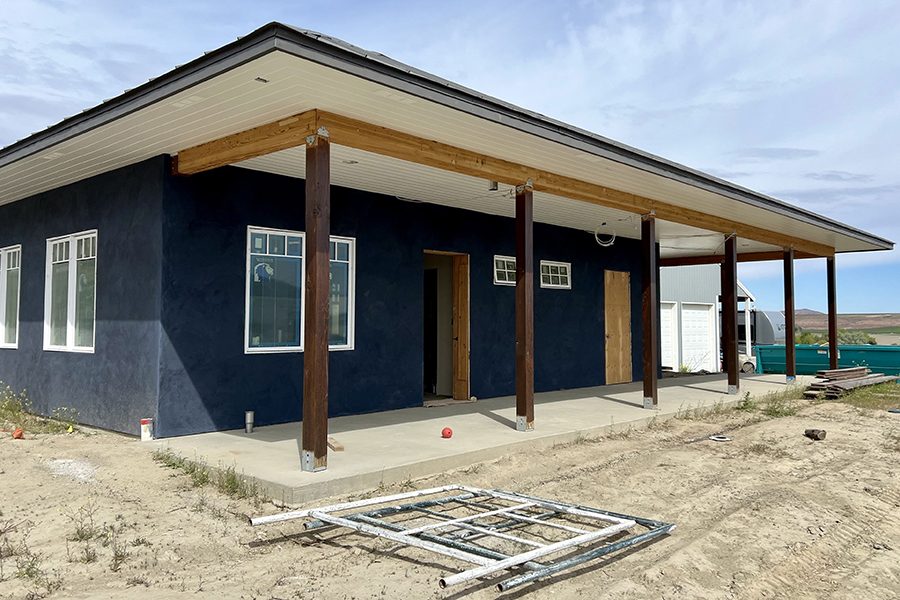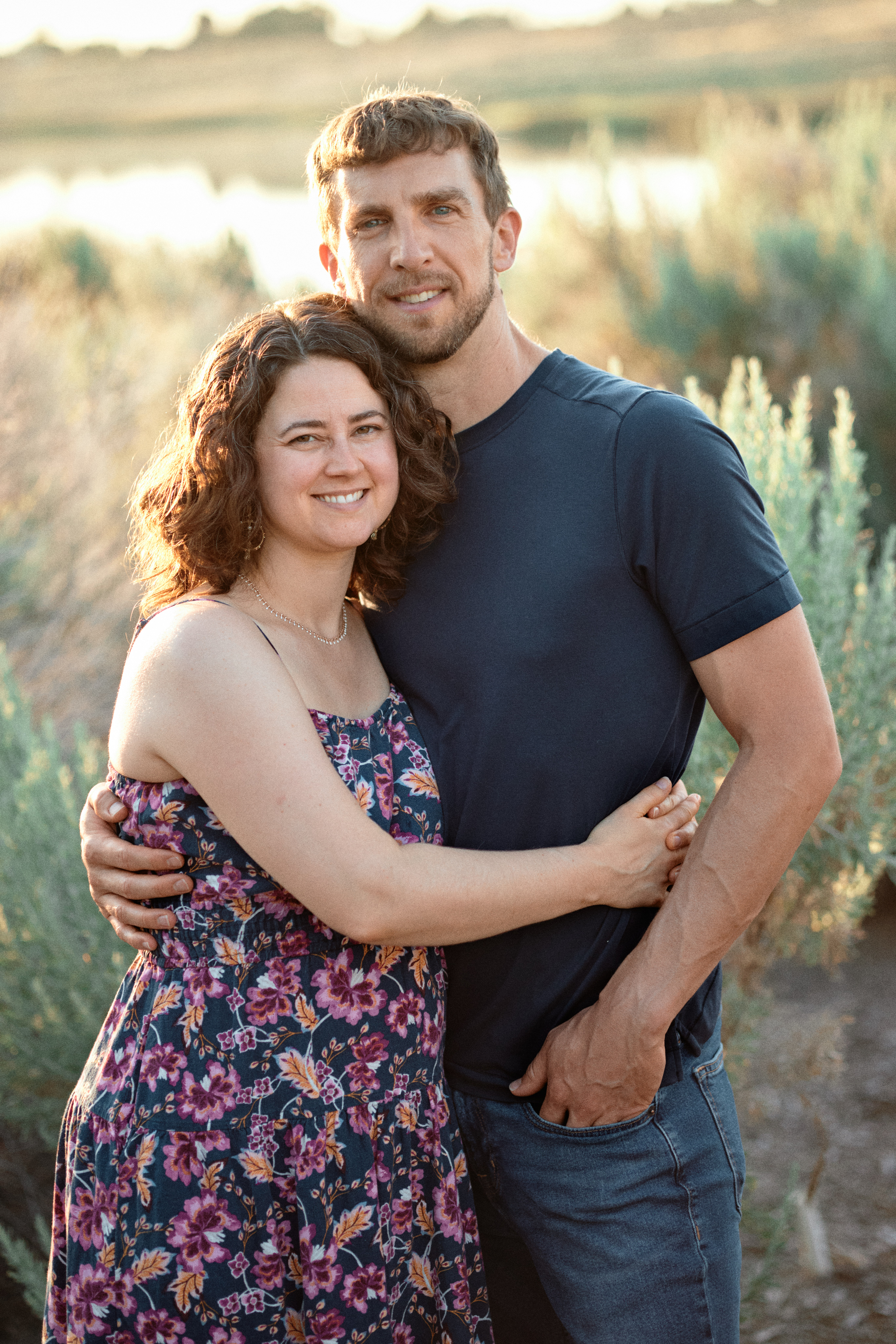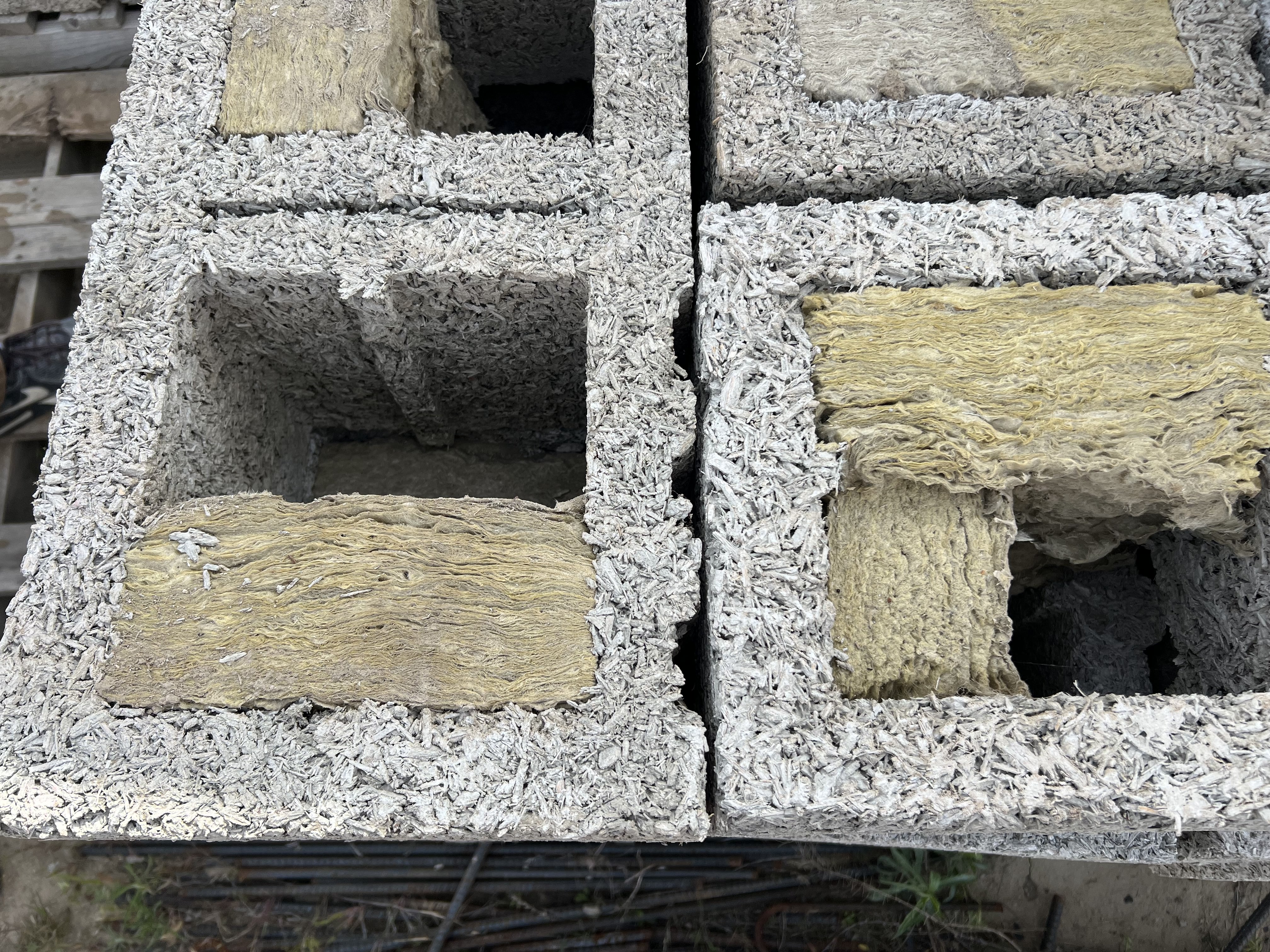
Home » Unique ‘healthy home’ under construction in the Tri-Cities
Unique ‘healthy home’ under construction in the Tri-Cities

A "healthy home," believed to be among the first of its kind in the Tri-Cities, is under construction now in rural Benton County. The house was designed and is being built with health in mind, using natural materials.
Photo by Sara SchillingMay 16, 2024
Amber Bruce became seriously ill about a decade ago.
“Doctors diagnosed it as chronic fatigue syndrome, and I was housebound – mostly bedridden – for about a year-and-a-half before we discovered that mold in our home could be one of the factors,” she said.
She left the home and her belongings for a short time to see if her health improved, and the difference was obvious.

Amber and Joe Bruce
| Courtesy Mark Cornellison/Lama Glama Photography“As I was gone for a couple of weeks, I started to feel a little bit better. But when I came back to the home, within a half an hour all of my symptoms had returned,” she said.
Natural materials
That started her and her family on a journey that’s set to culminate in a new house under construction now in rural Benton County. The house was designed and is being built with health in mind, using natural materials.
The “healthy home” is unusual in the Tri-Cities.
Amber and her husband, Joe, bought the property in 2018.
It’s taken several years to bring the project to fruition because of the unique demands of building such a specialized living space.
The Bruces were advised by architect and author Paula Baker-Laporte of EcoNest Architecture. They came across one her books, “Prescriptions for a Healthy House,” after diving into research in the wake of Amber’s illness.
“As I was getting myself healthy, (Joe) was trying to figure out what we can do next and where we can go,” Amber Bruce said.
The book “walks through the construction process and talks about standard industry practices and materials versus human health, and how building our homes in ways that are very common now can be detrimental to people’s health, and in particular for people who have an environmental illness like Amber, can be really damaging and severely debilitating,” Joe Bruce said.
He and Amber decided to move forward with their own healthy home, with Baker-Laporte acting as a consultant.
“She gave us specifications that our builder and the (subcontractors) would need to follow to make sure we were using the right materials, (following) the right processes and taking the right precautions,” Joe Bruce said. "Among other things, she helped us find products that would meet the structural requirements but reduce the VOCs (volatile organic compounds).”
Their home is about 800 square feet, with two bedrooms, one bathroom and a loft, among other space. The building blocks are Faswall blocks, which are organic, non-toxic and energy-efficient insulating blocks.

The building blocks of the "healthy home" under construction in rural Benton County are Faswall blocks, which are organic, non-toxic and energy-efficient insulating blocks.
| Photo by Sara SchillingOther materials used include concrete, clay and steel. The roof, bathroom and kitchen have special designs and features to cut down on moisture.
Ryan Liddicoat of Barean HILU in Kennewick joined last year as general contractor, taking over from a previous contractor.
His goal is for the Bruces to have occupancy in September.
A pricier approach
The healthy home approach is more expensive; Liddicoat said the Bruces’ home costs more than what a traditional house that size would.
But, for them and others like them, it’s needed.
With the healthy home, “they have a respite. Otherwise they’re not able to live in a place that's suitable for them,” Liddicoat said.
Challenges along the way
The Bruces noted that it’s been a challenge to source the materials and find construction professionals who are willing and able to follow the specifications. For some components, such as the clay surfacing, crews had to be brought in from elsewhere.
Sustain in Hood River provided clay for the project and was good to work with, Joe Bruce said.
He also said that while his family didn't work directly with Leading Force Energy and Design Center in the Yakima area, it could be a resource for people looking to build a healthy home.
They hope to share what they’ve learned and inspire others.
“Our interest here is to help protect other families. We’ve found both in this process, and in prior homes that we’ve owned or lived in, that there’s just no one really paying attention to the kinds of problems that we’ve encountered. And so families have to be advocates,” Joe Bruce said. “Anything that we can do to help families have a safe, healthy place – we’re interested in that.”
He emphasized that prevention is key, and it’s best to be thinking about healthy materials in your home before someone becomes sick.
“Doing it up front is better than trying to play catch up after someone becomes seriously ill from their home,” Joe Bruce said.
He and Amber are hopeful about their new home.
“We’re cautiously optimistic,” Amber Bruce said. “We’ve had a lot of ups and downs over the last decade of trying different things but we’re very hopeful that this will be a good place for our family to be more settled and continue improving our health in a way that we can just live a bit more comfortably.”
Latest News Real Estate & Construction Health Care
KEYWORDS May 2024





